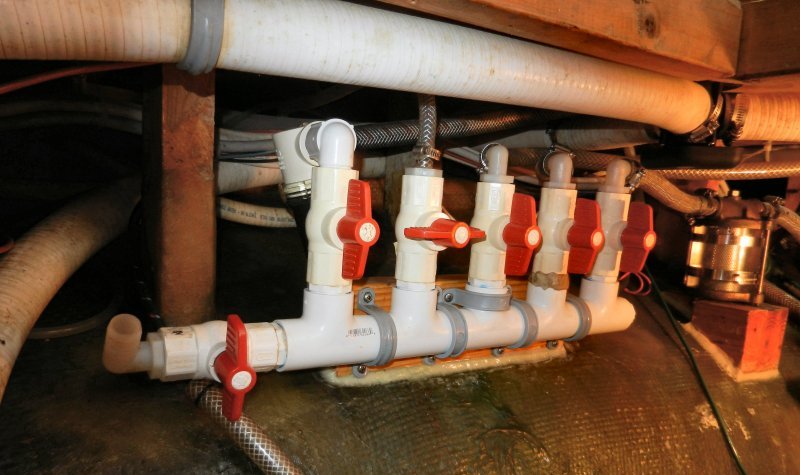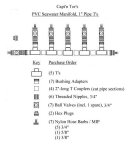HOMEMADE SEAWATER INTAKE MANIFOLD
©
2015 Tor Pinney - All Rights Reserved
My 1978 Pearson 424 ketch,
Silverheels, had 18 thru-hull fittings when I got her.
Now, I am of the opinion that the fewer holes in a boat, the
better, so I made an effort to reduce that number. Ultimately, I
cut it in half. Here's how.
I re-routed much of the
plumbing so that multiple items - drainage hoses from sinks,
scuppers, bilge pumps, shower sump, watermaker and so on -
shared thru-hulls. This doubling, tripling and in one case
quadrupling up on the thru-hull fittings reduced considerably
the number necessary. I also eliminated a couple of
overboard-draining items and their seacocks altogether, such as
a superfluous guest sink in the forward cabin.
The biggest single
thru-hull reducer, however, was the seawater intake manifold I
built and installed. To this manifold I led all the appliances
(except the engine) that use seawater - toilet, galley foot
pump, deck wash-down pump, watermaker, and a bilge rinse hose.
Now one thru-hull services all five needs.

|
I made
Silverheels' seawater intake
manifold with off-the-shelf PVC tubes and valves from Home
Depot, plus a raw water sea strainer between the seacock and the
manifold, and an inline pre-filter for the deck wash-down pump.
It has been functioning perfectly for 7 years now.
Two
items onboard
still enjoy their own, dedicated thru-hulls; the engine raw
water intake, and the toilet overboard discharge hose.
click image to
enlarge... |
 |
As for all those abandoned,
no-longer-needed thru-hulls, I removed (and cleaned and saved)
their fittings. I then feathered back the thru-hull holes inside
& out with an angle grinder, fiberglassed over them by layering
a succession of round patches of increasing diameter, and
dressed the closure with gelcoat.
I still have more holes in
my hull that I'd like, but only half as many as before.
(Note:
A sea chest serves the same basic purpose as a manifold, to
provide seawater distribution to multiple systems from a single
thru-hull. However, a sea chest is a tank, typically of a gallon
or more capacity, that can accommodate surge loads when more
than one system is drawing water at the same time. Assuming that
the loads are not continuous, this allows the sea chest to be
served by a thru-hull of less total capacity than the sum of the
attached systems. With a manifold the thru hull must be able to
provide the maximum likely demand from all systems. Otherwise
one of the systems may not receive its full seawater
requirement.)
~
End ~
Back to Cruising Tips